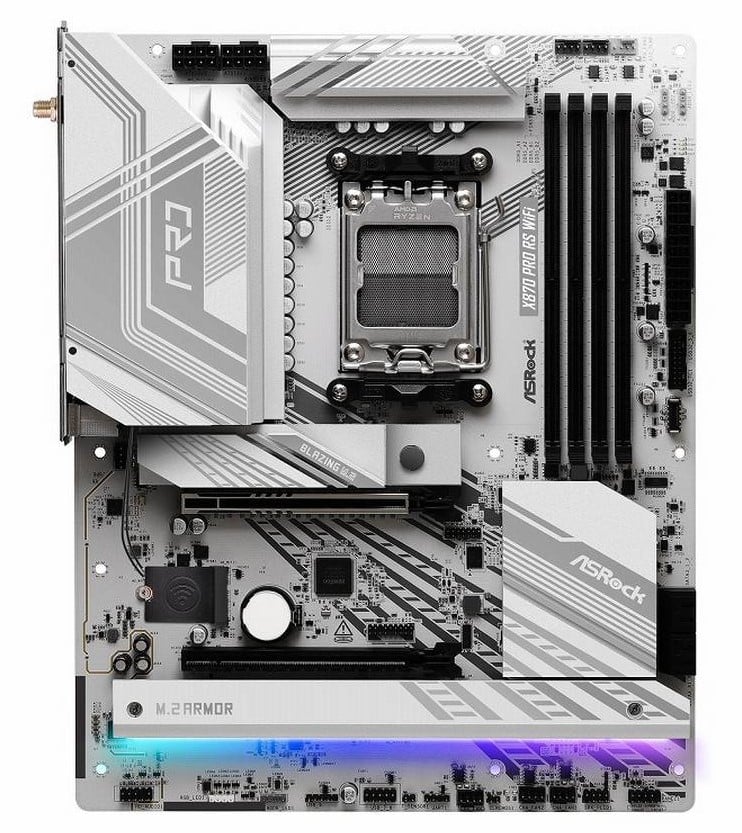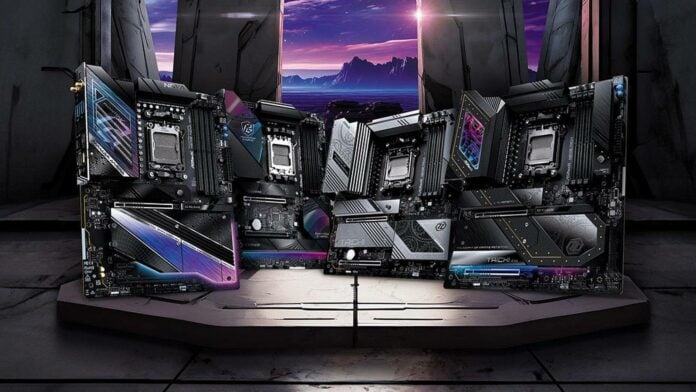ASRock has announced its X870 and X870E boards for AMD Ryzen 7000, 8000, and 9000 Series CPUs, boasting the latest connectivity available. The brand offers varying styles to please different user preferences without skimping on build quality.
For its new motherboard release, ASRock planned at least seven models, three of which are based on AMD’s X870E chipset, with the rest covered by the equally good X870. To be more specific, the brand will launch the X870E Taichi, X870E Taichi Lite, X870E Nova WiFi, X870 Riptide WiFi, X870 Steel Legend WiFi, X870 Pro RS WiFi, and X870 Pro RS.
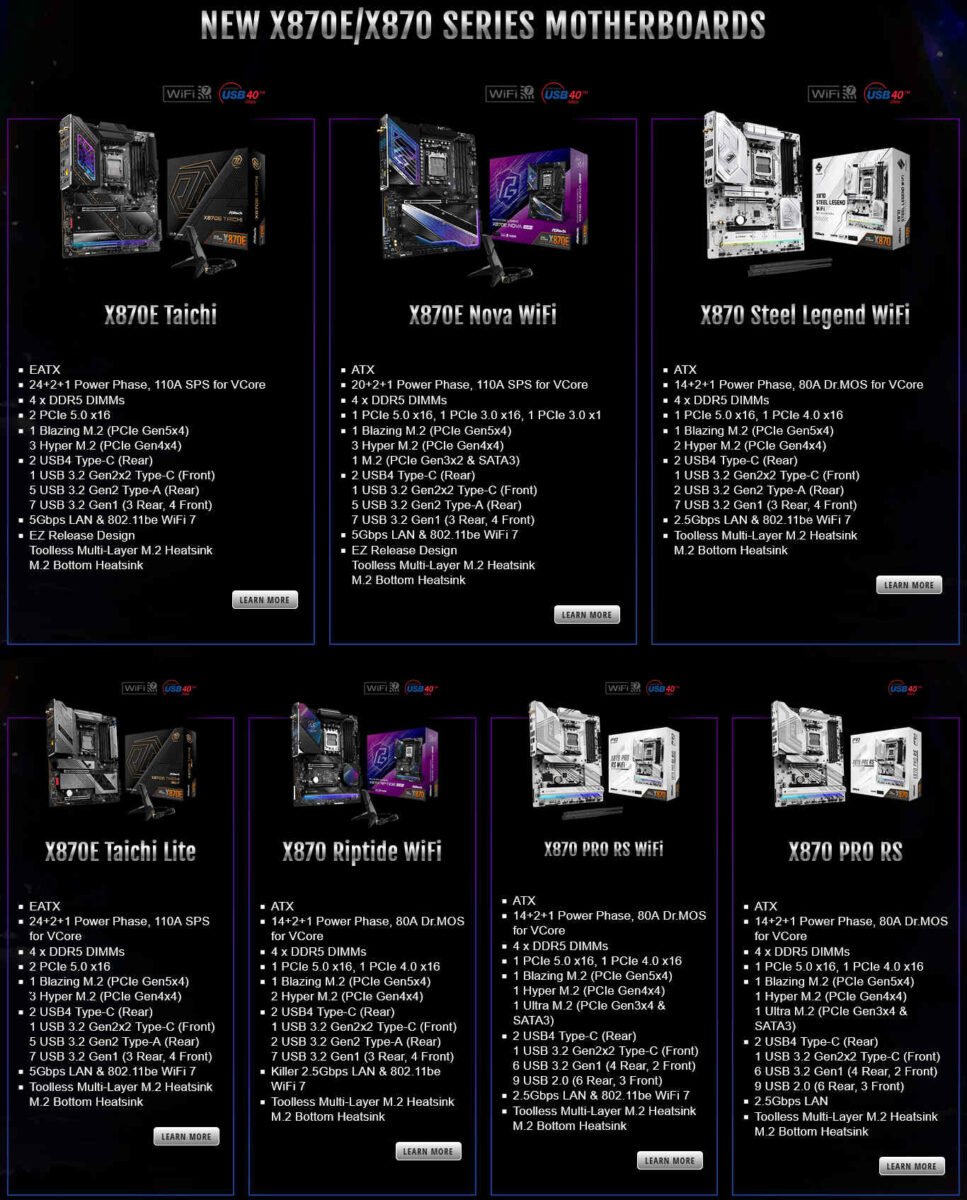
Taichi and Taichi Lite
Starting with ASRock’s signature Taichi series, we find two versions powered by a 24+2+1 110A power phase system, coming in E-ATX format. These should provide enough power for any Ryzen CPU you throw at them without even breaking a sweat. Both come equipped with two PCIe Gen 5 x16 slots plus four DDR5 DIMMs, though we still don’t know the supported memory speeds. The main separation is the style of each, with the former offering some RGB lighting and the latter focusing on the steampunk effect.
Aside from the look, you’ll have a hard time finding any difference between the regular and Lite Taichi boards. Whether it’s the amount of USB ports, Gen 5 SSD slots, or support for 5GbE LAN, the main specs are all identical. Even the toolless M.2 heatsink is available on both. Not to forget the handy segmented debug display. The only difference I managed to spot was the easy PCIe unlocking mechanism on the non-Lite version.
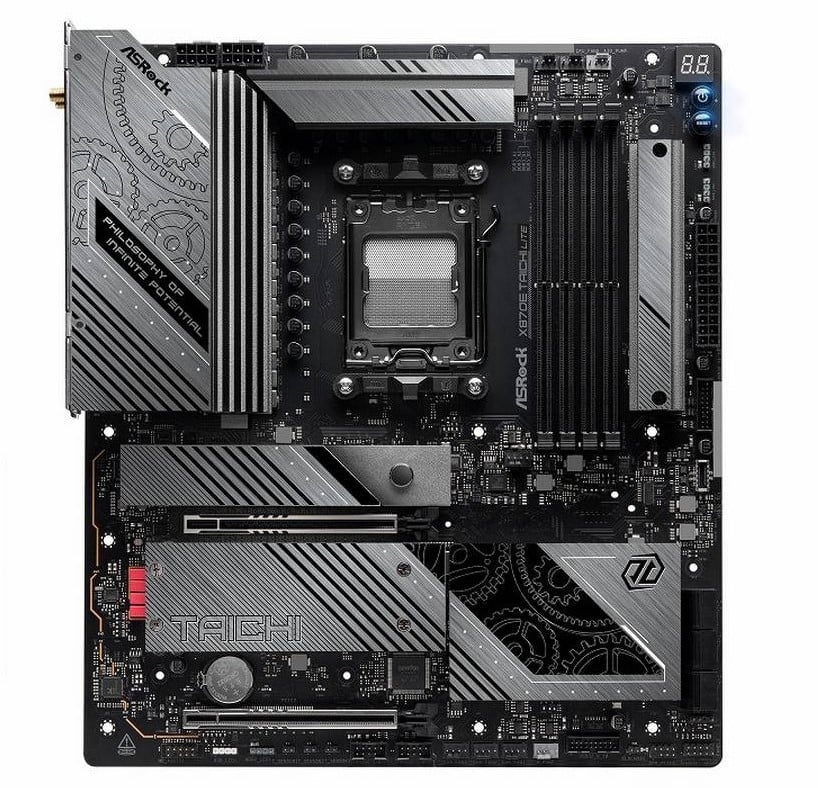
Nova
Next, we find the X870E Nova WiFi, powered by a smaller yet still overkill 20+2+1 110A phase system. Again, we have four DDR5 DIMM slots, but this time accompanied by a single Gen 5 x16 PCIe slot. Not a big deal since the X870E chipset doesn’t provide enough Gen 5 lanes for two PCIe slots anyway. Storage is handled by four M.2 slots – one is Gen 5, with USB – including two USB 4 – taking the biggest portion of the I/O. 5GbE LAN and Wi-Fi 7 complement the set.
The Nova would make for an eye-catching showpiece with all its RGB lighting. Though this flashiness is surely not for everyone, I am confident many will love all the bling it brings.
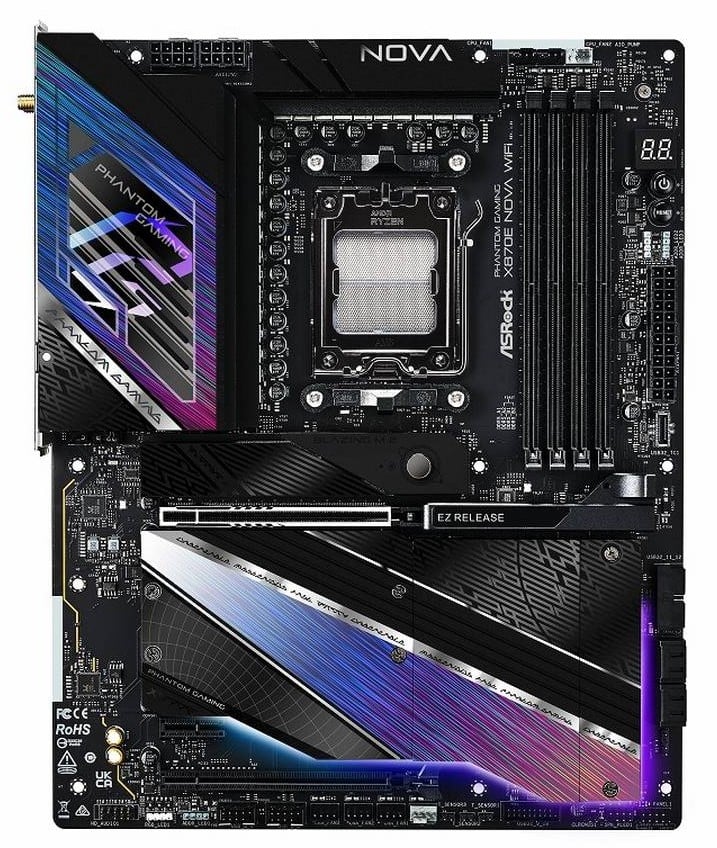
Riptide and Steel Legend
Moving a step lower, we find the X870 Riptide WiFi and X870 Steel Legend WiFi. Both are excellent models loved by value-conscious buyers. Their 14+2+1 80A power phases are enough to push all Ryzen chips to their limit, at least using air or liquid cooling. Being cheaper than the previous models, these subsequently carry less fancy features. For instance, ASRock does away with the 5GbE LAN for 2.5GbE instead, and there’s one fewer Gen 4 M.2 slot. Still, both boards are a great upgrade, boasting Gen 5 PCIe for graphics cards and USB 4 for those living on the edge of technology.
Though different colours may come later, Steel Legend WiFi is the one to go for if you fancy a white build. Riptide seems to be more tailored for RGB fans.
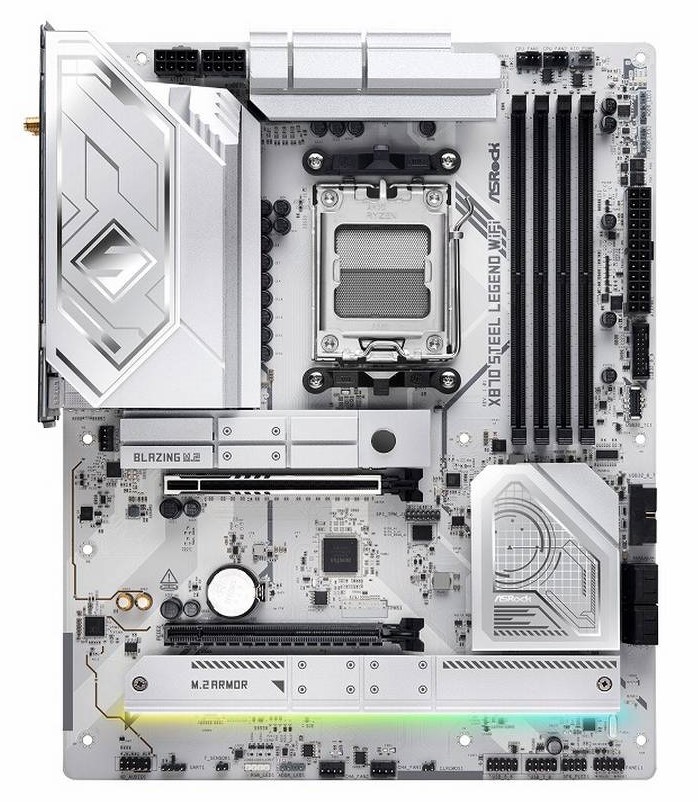
Pro RS
Closing the lineup, we have two X870 Pro RS boards, one of which features Wi-Fi 7. Regarding CPU power, we once more get 14+2+1 80A phases topped with moderate-sized heatsinks. Compared to the previous two, we lost another Gen 4 M.2 slot, which got replaced by a slower Gen 3 slot. That said, the important Gen 5 x16 PCIe and Gen 5 M.2 are still present, backed by four DDR5 DIMMs and a heap of USBs. Talking of which, ASRock has downgraded some USB ports to version 2.0, but thankfully two USB 4 are still available. Lastly, LAN is covered by a 2.5GbE, enough for most users.
Pro RS is likely to be the cheapest X870 board on ASRock’s roster, which is good, seeing the feature set on hand. But as usual, we need to test ourselves to confirm if the performance of each holds up, since even the slightest update could reshuffle the cards.
